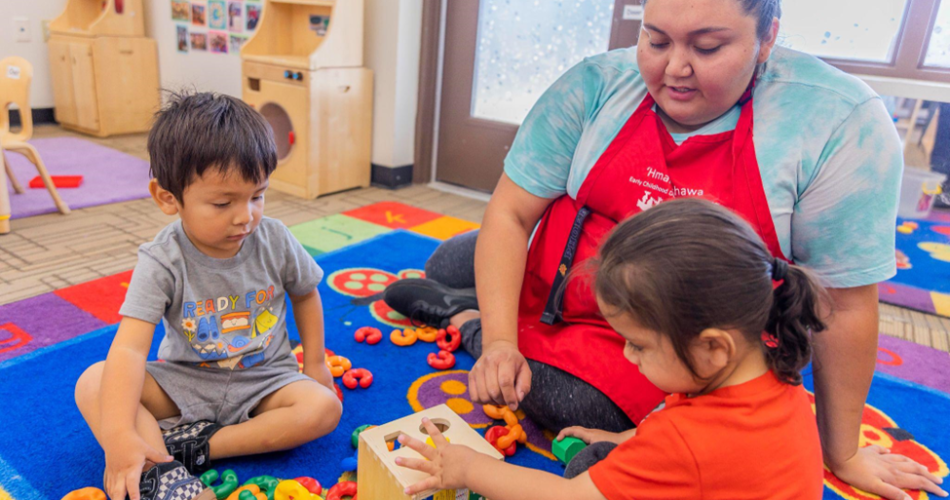Quality in Action
At Quality First, we talk about quality early learning every day. But what does quality look like in action? Check out the clips below to see a few ways that Quality First teachers turn everyday moments into learning moments.
Color Sorting Hints and Help
Quality in action looks like:
- Sitting with the child. The teacher’s position with the child helps her see how he is doing and where he may need help.
- Noticing a learning opportunity. When he struggles to match colors, she notices a chance to support his learning. As these opportunities arise, she steps in with a little extra help.
- Giving help. When he begins to put the orange in the purple cup, the teacher points to the orange cup and says, “It’s orange.” When he drops a green lime into the yellow cup, she holds her hand out and says, “one moment.” She points to the green lime and gives a hint, pointing to the green cup. After this extra help, the child succeeds with more color matching.
Rolling the mat
Quality in action looks like:
- Sitting on the floor to watch and guide. The teacher kneels on the floor to watch for learning opportunities. She watches and scans around the room, even when helping one child.
- Supporting independence. The teacher models how to roll up the mat when a child completes an activity. After modeling, the teacher invites the child to take on the task. By encouraging the child’s independence, she helps her gain motor skills and grow her self-confidence.
Shape Stacking with Friends
Quality in action looks like:
- Sitting on the floor to play. The teacher is on the floor, playing with magnetic blocks with the children. This gives her the best position to see what learning opportunities arise.
- Talking with the children about their play. During play, the teacher and children have conversations, taking turns back and forth. The teacher uses words like “goat,” “sheep,” “stacking,” “square,” “triangle,” and “diamond.” These conversations help children hear and practice new words.
- Pointing out positive behaviors. She notices and points out when a child “uses his words” to join in play with another child. Calling attention to positive behaviors helps kids know what to do in the classroom—and leads to more positive behaviors overall.
Success with Sentence Strips
- Watching for opportunities. The teacher sits at the table while the children work on reading sentence strips. She watches closely and scans the table to notice who needs help.
- Giving hints and one-on-one help. When children hesitate, she provides small hints. She makes the first sound of a word, movements with her hand and arm to model sounding out the word, and gestures to clue the children to the sound of the letters. This helps the children recall prior learning and succeed in the literacy activity.
- Encouraging children to keep trying. She encourages children with praise like high-fives and statements like “beautiful reading” and “you know that word.” This helps the kids keep trying, even with a challenging task.
Each of these moments starts with a teacher getting close to where children are—on the floor or at the table–and watching for opportunities. And the teacher is the active ingredient in turning that opportunity into a learning moment. We hope your time is full of these moments in your daily work with Arizona’s youngest learners.
At Quality First, we love to hear from you. Share your innovative practices to help inspire others. Email us at QualityFirst@FirstThingsFirst.org.
